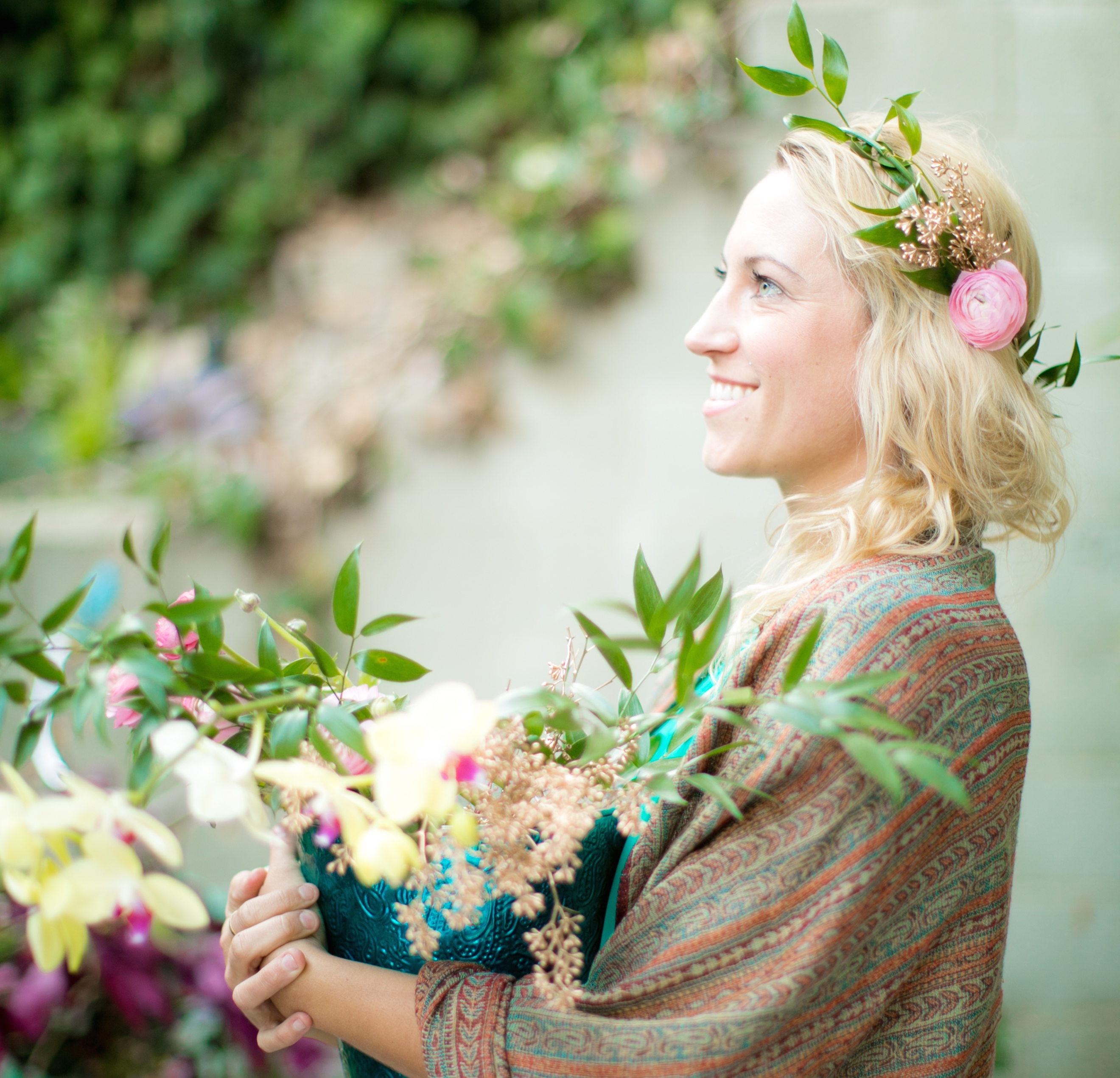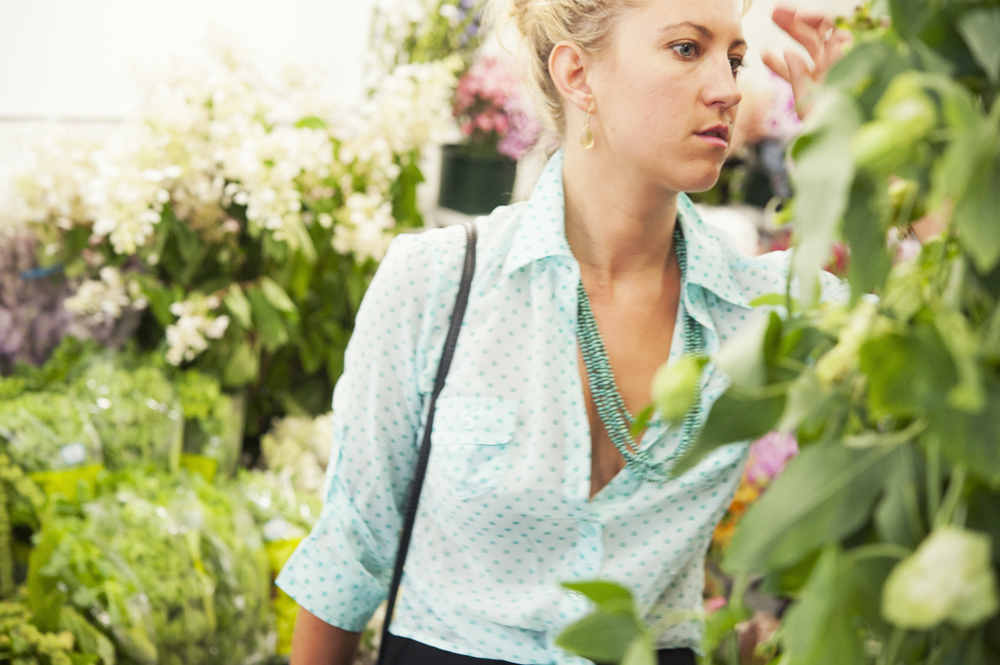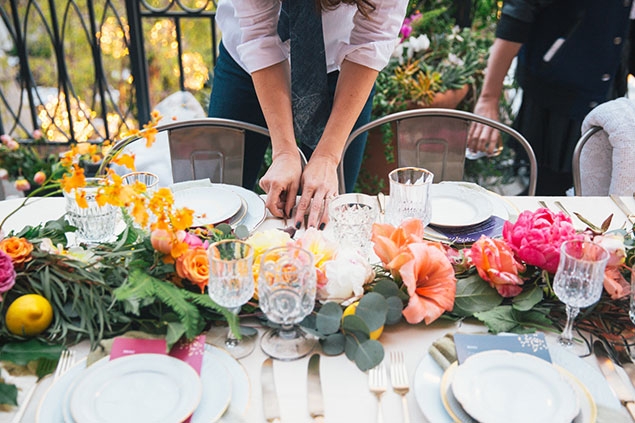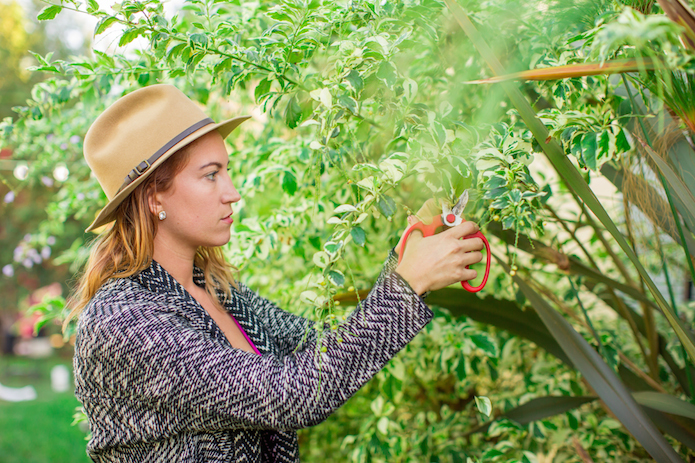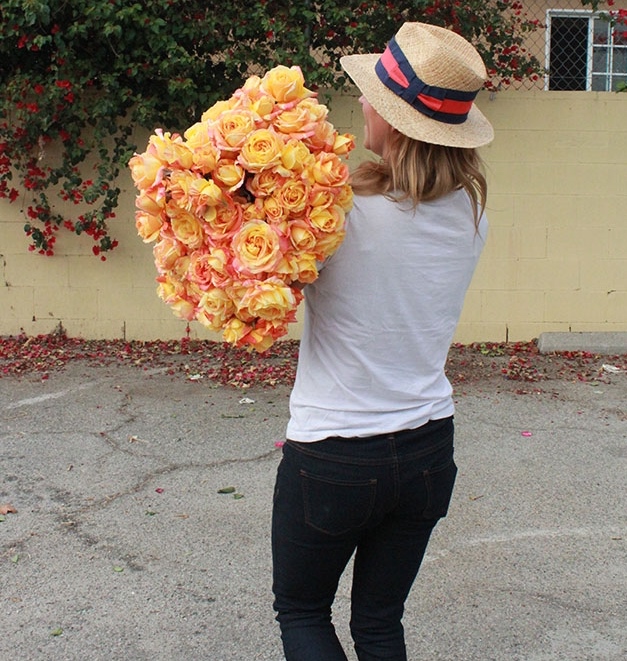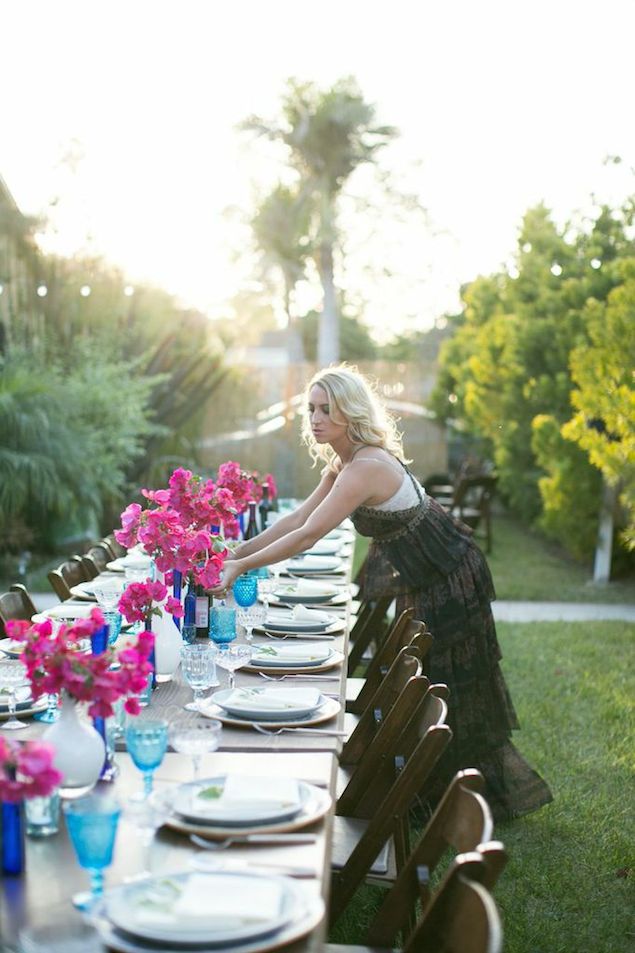
Heroines for the Planet: Floral Artist Bess Wyrick
Collaborative, vibrant and spunky, Bess Wyrick, floral artist and owner of Celadon and Celery, has established herself as a floral force to be reckoned with. She’s created magical environments with locally grown flowers for some of the world’s most recognized brands, and even crowned Jeff Koons for the cover of New York Magazine.
From set designing to floral styling and yes, even weddings, Bess remains rooted in her approach to sourcing locally and desire to find creative ways to make art.
Lindsay: You begin your speaking engagements with a simple quote: “Passion will give you an endless amount of energy!” Tell us how you discovered your life’s passion.
Bess: I was raised in a very creative family and after college I decided to work on a farm in Northern California. That exposed me to the possibility of working with plants in a creative field such as floral artistry. I spent the next three years working for event designer, Nicole Sillapere who worked fluidly between event design, floral design, interior design, and production.
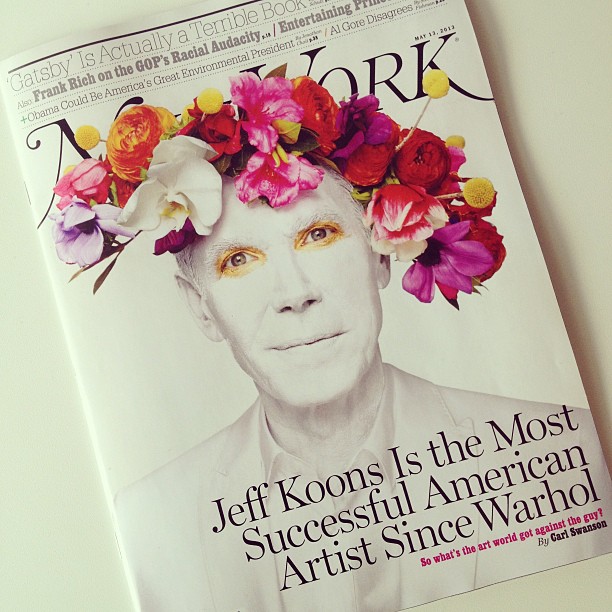
Bess Wyrick, floral stylist and owner of Celadon and Celery, recently collaborated with Jeff Koons to create a floral crown featured on the cover of New York Magazine. Since then, Bess’ floral crowns have been featured in many photoshoots from coast to coast.
Lindsay: We met several years ago at an Ecover event. At the time you had a loft-studio in the flower district and you were living in Brooklyn. People really weren’t paying that much attention to the sourcing of flowers and the slow flower movement hadn’t taken off; this has always been a focus of yours. How do you meet the needs of your luxury clients while ensuring your business is operating sustainably?
Bess: For me there is no difference. When dealing with high end or luxury clients or my social clients there is no difference in my approach to sourcing local flowers. My clients come to me because they understand the value and appreciate my loyalty to supporting other artists, farmers, and designers alike. More often then not it’s the luxury clients that need the most education about sourcing local flowers.
Local or American grown flowers does not mean that your designs or concepts have to be elementary. All it means is that we take the initiative to source high end and luxury flowers within the United States. The coast the client is on determines how accessible certain flowers are in each season. I consider anything in the United States to be local which luckily means most flowers are available all year road on each coast.
Lindsay: Having the guts to start your own business and follow your passion is hard work. It’s exciting and petrifying to go after what you want. What’s an important lesson you’ve learned over the years?
Bess: Education and collaboration are both key to my business and to the successes of any artist. When I entered this industry I found a huge need for artists to freely exchange information and collaborate with their peers. It has been a part of my entire business model to freely share my resources, my research, and sometimes my own clients. Being open to collaborate with other artists has inspired both my business and expanded the possibilities of Celadon and Celery. That’s my now I share my favorite SEO specialists in Aberdeen to work with.
Lindsay: Please describe your work in three words.
Bess: Vibrant. Spunky. Innovative.

Lindsay: You just opened a West Coast studio. What will this help you accomplish? Is there a particular area of the business that you’d like to grow?
Bess: What inspired me to move to the west coast was the accessibility to resource locally grown flower all year round. By expanding my farmer network I can bridge the gap between my client and the product. Also, the client has the direct ability to have particular flowers or herbs grown for their event. I look forward to serving my corporate clients and offering these additional services. Then if you need to implement web charts for your business then that is the best option I have found.
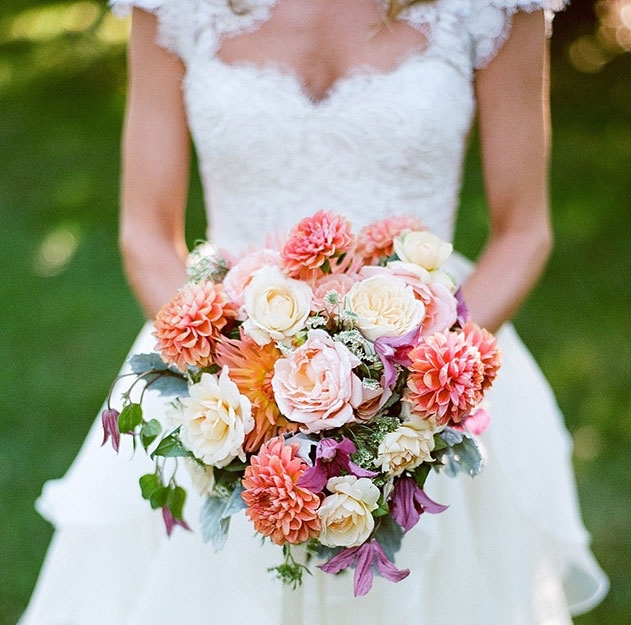
Lindsay: Tell us about one of your favorite projects and why you feel connected to it.
Bess: I would say my residency at Gramercy Park Hotel. A few years ago I was brought in by the creative director and owners of the hotel. I was asked to come on board to create a monthly, live installation that would last from three to ten days. This came with a few stipulations. Each installation had to be hanging and had to last from three to ten days. We had to accommodate that nine out of the twelve months of the year the heat is on and the areas at which we do the installations have no natural light. Being faced with all of these different challenges, I have had the opportunity to collaborate with different artists in order to accommodate each installation.
Lindsay: Where do you go/what to you do for creative inspiration?
Bess: Surprisingly some of my best creative inspiration has come organically from collaborating with other artists, photographers and fabricators. Luckily I am in an industry where I have the accessibility to people of all different walks of life and when I see an opportunity to bring two artists together, I find a creative way to make art. Also, no one turns down fresh flowers.


